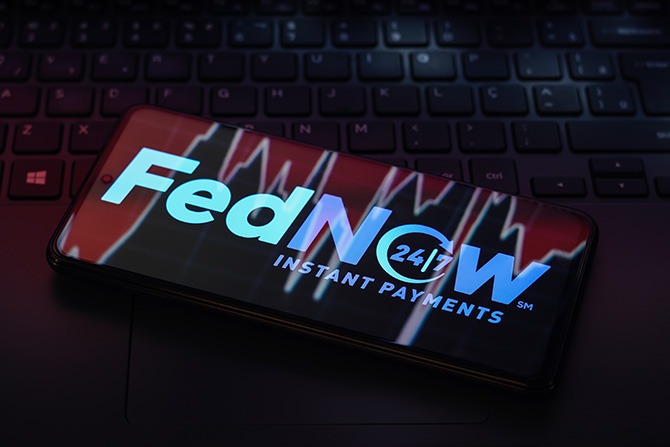The Federal Reserve’s FedNow® Service, an instant payments rail that launched this past July, was a long time in the making. As you dive into the faster payments space, you probably have a few questions about how the FedNow Service was created. What were the criteria, who was in the room and — most importantly — are you behind if your team hasn’t gotten started yet?
We sat down with Sheila Noll, PCBB’s Chief Operating Officer, who served on the FedNow Service’s Faster Payments Task Force, to give you an inside look at how the FedNow Service was launched. With over 30 years of banking leadership experience and expertise in the payments space, Sheila is a current or former member of many committees in the payments sector, including the ICBA Operations & Payments Committee, the Clearing House RTP® Advisory Committee and the Faster Payments Council Advisory Board. The following is an abbreviated version of our longer interview.
Tell us about the work that went into building the FedNow Service payments rail.
There were six major categories of criteria that the Faster Payments Task Force considered: ubiquity, efficiency, safety, soundness, security and speed.
It was important for everyone to know that any payment would be settled, final and irrevocable — and that it would happen within seconds. We also needed to make sure that the laws of our country supported what we were trying to bring forth, that we had sufficient rules so everyone knew what was expected, and that everyone could play by the same rules, regardless of whether there were multiple operators.
The work of the task force was extremely inclusive. Banks and credit unions of all sizes were able to be engaged, but it wasn’t just the financial institutions. Everyone was invited to the table, including core providers, fintechs and software developers who were looking to develop applications for this new great idea of a payment system. We also had some of the largest merchants at the table, as well as consumer advocacy groups, rulemaking bodies like the National Automated Clearinghouse Association (NACHA) and credit card associations.
What did you learn while you were developing the FedNow Service?
There were many other countries that jumped into instant payments before the U.S. did, as their economies are far less complex than ours. So as a self-professed payments geek, I’d always cringe a little bit when people would say, “Oh, the U.S. is so far behind.” I’m thinking, no, we were very thoughtful and methodical with our approach, and I think that was an important thing for us to do as a country.
In addition, we heard, and maybe even thought to ourselves to a certain degree early on, that faster payments meant faster fraud. But quite frankly, we’re not seeing that. It could be because it’s not yet mainstream, but we’re not seeing the faster fraud because there’s less time for fraud to be introduced into a payment.
What advice do you have for community banks that have already started to implement a faster payment method?
It’s just getting everyone from every part of the organization thinking about, “OK, what’s next? What else can we do to better serve our customers?” Continually seek additional use cases that will make sense because solutions will come to market that will support new use cases we have not even thought of yet.
Just keep learning, keep talking to your partners, and there will be even more opportunities as time goes by. Certainly, talk to your customers about what friction and what problems can be solved with faster payments.
What do you recommend for community banks that haven’t chosen a faster payment method?
I would say take a big, deep breath — there’s plenty of time. We truly are still in the infancy as it relates to deploying a solution. However, if you are not yet spending time learning about faster payments, then you’re getting a little behind. If you have not started to build a payment strategy around this, it’s very critical that you start doing that sooner rather than later.
Moreover, there’s value in keeping your contracts with core providers and fintechs short because things are going to change dramatically in the next two to three years, and you want to be able to adapt to those things.
Whenever or however a community bank decides to participate in faster payments, there are many resources available. The Federal Reserve will launch a tech-centric developer resource for participating financial institutions to access documentation, such as the recently updated operating procedures, technical specifications, as well as code and message samples to assist with service implementation. There are also correspondent banks available to help, some of which were even involved in the FedNow Pilot Program.
To read more and learn about how the task force worked through the development process and how the U.S. may solve the national directory and interoperability issue, as well as specific faster payment use cases that community banks should consider, check out the white paper under the industry insights section of our website.
To continue this discussion or for more information, please contact Jay Kenney.
Dedicated to serving the needs of community banks, PCBB’s comprehensive and robust set of solutions includes cash management services such as Settlement and Liquidity for the FedNow Service, international services, lending solutions and risk management advisory services.
Jay Kenney
SVP & Southwest Regional Manager for PCBB
pcbb.com | jkenney@pcbb.com







